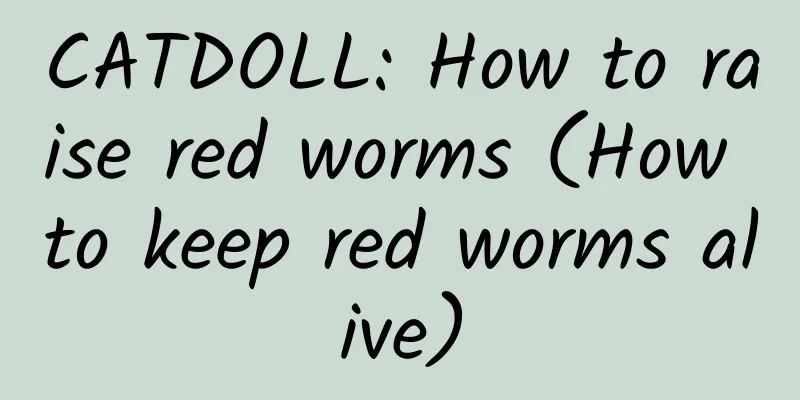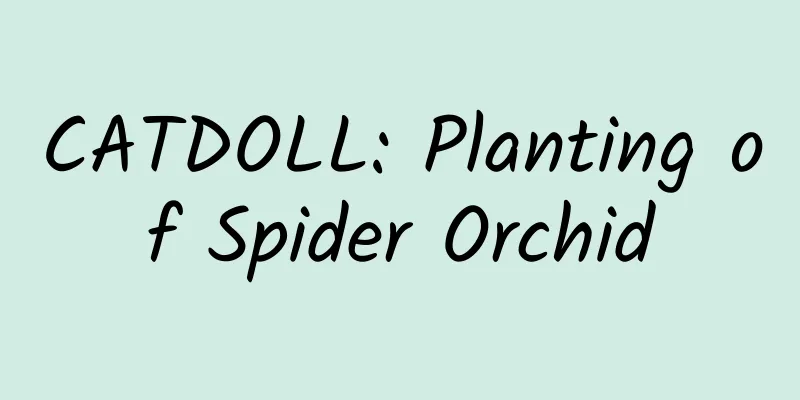CATDOLL : CATDOLL: How to raise red indigo bunting

|
Let's talk about the feeding and feeding of red indigo buntings. I have gained some experience in raising red indigo buntings in recent years, and now I would like to share with you: Changing the food of an indigo bunting is the first key. I did not tie its wings when I changed its food, because I thought an indigo bunting would be very frightened in a new environment, so I did not tie it up. I wanted it to be as comfortable as possible. I put it in a dark cage, changed its food to porridge-like food, and put a few live worms on it (instead of cutting the worms into pieces as everyone often says). I put it in a quiet place and check on it again after a few hours. I think you should not check on it too often, and give it some time to calm its nervous nerves. The cage should not be too big, so as to reduce its physical consumption. After a few days, you can change its food. Another method is to change the food collectively, which is also very effective. Put several birds in a cage at the same time, put porridge-like food on them, and change the food after one day. However, it is important to separate the cages immediately after changing the food. It is not good for the birds to be kept together for a long time. I usually pay attention to its dinner. I feed it more insects at night so that it can rest after eating enough, so that it will be energetic the next day. But I don't feed it insects in the morning, only noodles, so I don't worry about it eating only insects and not noodles. The noodles I feed it are always mung bean noodles and egg yolks. When feeding the indigo bunting worms, I always hold it in my hand and feed it. Now, when it sees me coming, it knows that I want to feed it worms. It always stands on the perch and tilts its head to look at me. I also talk to it when I have nothing to do. It seems a bit like Jia Baoyu. In fact, this can make it remember your voice more clearly. When I get home from get off work, I can hear it calling. When it calls, I feed it some worms. After a long time, it has formed a conditioned reflex, which is more interesting. The methods I have collected about chin hair replacement I bought a red-throated pheasant by accident on September 21, 2003. I heard that this bird was difficult to raise, but I didn't expect to succeed. Later, I read some articles about the molting of red-throated pheasants and talked about this issue with bird lovers many times. I learned a lot from it. I also collected some methods, which I will write down for discussion with you: 1. Add some chicken blood to the food when the hair is molting. This method seems to be commonly used in Shandong, but the effect does not seem to be very good. 2. Adding wolfberry to food. This method seems to be used more often and has good results. It is also widely used. Wolfberry is a Chinese herbal medicine that can help digestion. This method is also quite effective. 3. Add animal liver, which can detoxify, produce blood and promote blood clotting. This method is quite effective. I used chicken liver and I think it should be quite effective. Because it makes sense. 4. Add plant pigments, such as carrots, etc. This year I used tomatoes, and I bought bagged tomato sauce from the supermarket. 5. Add various nutrients, such as bone meal, yeast flakes or other protein substances. I think it is better to add cuttlefish bones, and you can also add a little yeast flakes, which should be enough. 6. I heard from bird lovers that Red-throated Buntings should not be fed eggs because the egg yolk contains lecithin, which will turn the red color into yellow. I don’t know whether this is true or not. 7. Almost everyone knows that you should feed more insects when the cat is shedding, so I won't say more here, but I want to remind you that I feed it insects in the morning. I feed it insects as soon as I open the cage in the morning, and I feed it more insects, so that it is full, and then I feed it with food. I learned this method from a friend in Shandong. 8. You can feed some other animal feed, such as spiders (but no more than one per day), crickets, etc. to increase animal protein. 9. I also heard that one method is to feed some bloodworms to the birds. It is said to be effective, but I haven’t tried it. The above are some of the statements I have heard about food when the red-chinned bunting is molting. Please advise me whether they are correct or not. My Chin Tip Recipe Mung bean flour + soybean flour + corn flour + peanut flour + silkworm pupa powder + beef and mutton powder + cicada molt + egg yolk (usually feed some mealworms.) A brief discussion on capturing the chin The spotted thrush is a migratory bird. It breeds in Northeast China, northern Inner Mongolia, Gansu, Sichuan and other places in summer. When migrating, it spreads all over the eastern part of my country, and winters in Guangxi, Hainan Island, Taiwan and even further south. When migrating, it mainly passes through Beijing, Tianjin, Hebei, Shandong and other places. When migrating, it stays close to the waterside or the coast, walks on the plains, and generally does not walk on mountains and basins. When migrating, it often walks on cotton fields, peanut fields and other crop fields. The spotted thrush migrates at night and rests during the day. If it rains, it will no longer walk, so we usually catch a lot of spotted thrush after the rain. Let's talk about catching it. This is a bit troublesome. The net for catching spotted thrush is generally not very high, because spotted thrush usually runs on the ground, so the net does not need to be high, about one meter high will do. When catching, open the net, surround it in a semicircle, and leave a mouth for the bird to enter. When surrounding it, be sure to surround the bottom of the net well to prevent the bird from running from the bottom of the net. Generally, in cotton fields or near water, spotted thrush will not migrate far from the water. If you walk along the edge of the field, you can hear a very small cry. You can scare it with sand or branches. It is best to have more people, and everyone should line up in a row so that the bird will not run away. Drive it into the net, and it will hit the net head-on. When catching it, you must catch it from behind, so that it will drill into the net with all its strength and it will not run away. Is what I said clear? It depends on everyone to explore in practice. The capture methods in the south and the north are different. The method I introduce here is for the north. Please introduce the method in the south. A Brief Talk on Spring Orchid and Autumn Red People who raise blue-throated chicks often say that they learn orchids in spring and red-throated chicks in autumn. Many people also say that this has no scientific basis. I think the people who say this think this way: blue-throated chicks mostly learn the calls of insects. After winter and spring in the south, blue-throated chicks have learned many calls, so when they go to the north, they already know a lot of calls. Red-throated chicks are mostly native chicks. Most red-throated chicks in autumn are born in the same year, but they have learned fewer calls, so it does not take too much time for them to learn to call. Blue-throated chicks in autumn do not know any calls, and it takes a long time to learn before they can learn to call some insects, and there are no insects in the north in winter for them to learn. Therefore, in spring, they rarely make calls. Over time, people say that you should raise orchids in spring and red-throated chicks in autumn. [Main points for feeding] my country has a long history of raising red-throated pheasants, and there are also very particular cages for them. The feed varies between the north and south of the country, but generally powder is used, and fresh beef and mutton minced meat, mealworms or corn borer larvae are often given. Newly captured red-throated pheasants are often frightened and uneasy, and do not eat. In order to prevent them from hitting the cage and damaging their feathers, reduce physical loss and keep them stable, they need to be "bound up", that is, cross the 4-5 outermost flight feathers of the bird's wings at the waist, tie them with cotton thread, and turn the remaining flight feathers over the tie. If the bird is still uneasy and still scratches the cage and rubs its tail, the entire tail tip needs to be tied up. After putting the tied bird in the cage, put on the cage and place it in a quiet place to "recognize food", that is, put mealworms or corn borer larvae in the cage, put porridge-like red-throated pheasant powder in the food can, add fresh minced meat, and let the bird eat the worms in the cage or food can when it is hungry, and drink the powder porridge in the food can. If you find that the insects and thin food in the cage have been eaten up, add new food, usually once every 2 hours. Do this for a few days, and the bird will recognize the food. Then open the cage, hang it high, and gradually increase the concentration of porridge-like food. When the red-throated thrush can eat the powder, put in the water tank and food tank, add powder and water respectively. The food and drinking water of the red-throated thrush must be kept clean and replaced with new ones every day. The cloth pad at the bottom of the cage must be brushed with seafood, dried, and replaced frequently to avoid contamination of the bird's toes due to the strong corrosiveness of feces. The red-throated thrush likes water baths, and bath water should be provided frequently. Bath water can also be provided when the room temperature can reach above 15℃ in winter. The molting period is the key period for raising red-throated thrush. Uneven molting or failure to take off feathers will not only affect the beauty and singing of the bird, but may also cause death. Therefore, special attention should be paid during this period, and more live food and other animal feed should be given. Let the bird breathe fresh air or go to the grass to "take" dew every morning. Some people put birds in the molting period in a cage covered with grass, so that the molting feathers are shiny and beautiful. When raising red-throated pheasants, you should pay attention to preventing colds in winter. The room temperature should be kept between 10-15℃, and the temperature should not fluctuate. It is not advisable to walk the bird outside. |
>>: CATDOLL: How many tilapia can be raised in one acre of pond? What should I pay attention to?
Recommend
CATDOLL: What method is used to treat white tail disease in white shrimp?
① Soak tea dregs in tea seed cake for 6 hours, th...
CATDOLL: What do flies eat? (What food do flies eat to survive)
1. What do flies usually like to eat? Flies like ...
CATDOLL: The best guide to raising rabbits with your phone: Make your phone a pet raising tool
In modern society, mobile phones have become an i...
CATDOLL: Can you fish for crabs in Qilihai in winter?
In China, December is obviously not a good season...
CATDOLL: How to keep mantis shrimp alive overnight, how long can they live in fresh water
If the purchased mantis shrimps need to be kept o...
CATDOLL: What are the advantages of raising laying ducks in cages compared to traditional laying duck farming?
What are the advantages of laying duck cages comp...
CATDOLL: What is the most profitable animal to raise nowadays?
1. Pigeon breeding The breeding cycle of squab is...
CATDOLL: Who was the founder of sericulture and silk reeling? (Who was the founder of sericulture and silk reeling?)
1. Chinese civilization has a long history. It is...
CATDOLL: Is there anyone who specializes in breeding maggots?
1. Is there anyone who specializes in breeding ma...
CATDOLL: What large tropical fish are easy to raise and look good?
What large tropical fish are easy to raise and lo...
CATDOLL: I would like to ask, when buying a male guppy, is the bigger the tail, the better? Or does a big tail mean it is old? How can I identify a young one? Thank you!
The body should not be too big, otherwise it will...
CATDOLL: How big can Chinese catfish be?
1. How big can Chinese catfish be? Two years ago,...
CATDOLL: What is the breeding season for crayfish?
The breeding season of crayfish is summer. Crayfi...
CATDOLL: What kind of meat is best for raising ants? (What kind of meat is best for raising ants?)
1. What kind of meat do ants eat? Ants are omnivo...
CATDOLL: Crucian carp is the fish species that anglers come into contact with most frequently. What are the common types of crucian carp?
Crucian carp is the fish species that anglers com...









